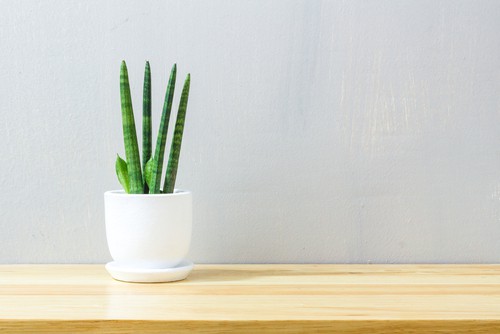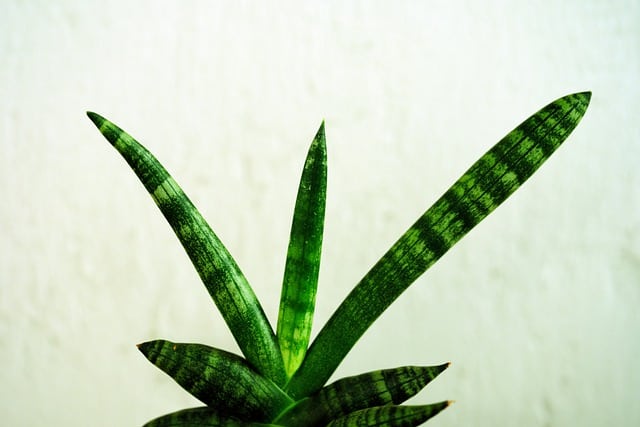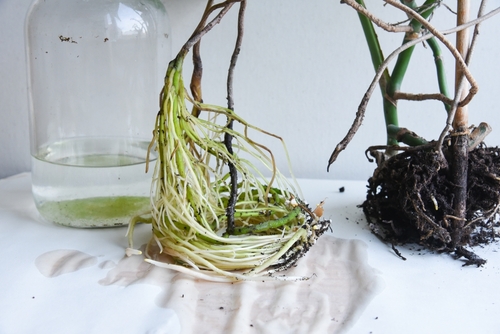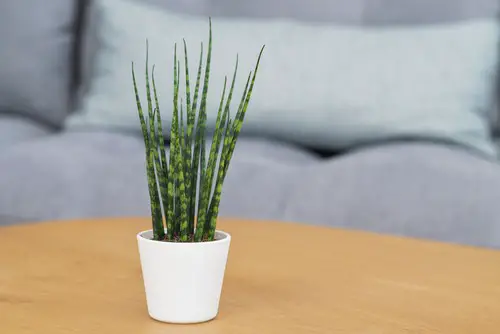Generally, gardeners will prefer to adorn their homes with the most beautiful plants. Hence, comparing plants such as Sansevieria Fernwood vs. Cylindrica sounds like a fantastic plan.
Sansevieria Fernwood and Cylindrica are two popular snake plant varieties, both known for their air-purifying abilities, easy maintenance, and unique appearance, but they differ in their leaf structure, growth pattern, and care requirements.
There’s no debate that both plants are elegant. But in a case where you have to choose one of the two plants, there’s a need to do a comparison.
In this article, we will discuss the differences and similarities between the Sansevieria Fernwood and the Cylindrica plant.
Now, let’s get started!
Sansevieria Fernwood vs. Cylindrica Summary of Main Differences

One major difference between Sansevieria Fernwood and Cylindrica is their leaves. Observe the Fernwood Sansevieria leaves and you’ll notice it has cone shapes with tiger-print stripes.
See similar comparisons:
On the contrary, the Cylindrica leaves are stiff, upright, and have a cylindrical shape.
Sansevieria Fernwood vs. Cylindrica Quick Comparison
| Plant | Sansevieria Fernwood | Cylindrica |
| Leaf Color | Dark green with light-green tiger-print stripes | Dark green or gray |
| Stem Color | Dark green, white, light green, yellow | Gray-green |
| Variegation | Dark green, mint, and yellow | Green-gray |
| Flower | White, red | Cream-white |
Sansevieria Fernwood vs. Cylindrica Differences
Even though the Sansevieria Fernwood and Cylindrica look similar, they’re different in some ways. We’ll be explaining the differences in their names, taxonomy, shape and appearances, growth rate, and more.
1. Origin and Name
Sansevieria Fernwood is native to Africa. It is a hybrid of Sansevieria suffruticosa, which originates from Eastern Africa, and Sansevieria Parva, native to Kenya, Madagascar, and South Asia.
Other names for the Fernwood Sansevieria include the snake plant, Jinn’s tongue, and mother-in-law’s tongue.
Cylindrica is native to Africa, more specifically to Southern Africa and Angola. Other names for the Cylindrica plant include spear sansevieria, African spear, and CCylindrica snake plant.
2. Taxonomy
Sansevieria Fernwood
- Kingdom: Plantae
- Species: S. Fernwood
- Order: Asparagales
- Family: Asparagaceae
- Genus: Sansevieria. Dracaena
Cylindrica
- Kingdom: Plantae
- Species: D. angolensis
- Order: Asparagales
- Family: Asparagaceae
- Genus: Dracaena
3. Shape and Appearance

It’s easy to identify the Sansevieria Fernwood plant leaves by their cone shape with several long, tiger-print striped leaves. These leaves grow vertically and join at the stem to form the whole plant.
On the contrary, the Cylindrica plant has upright, slightly striped leaves that emerge from a rosette base. They also have a cylindrical shape that narrows to a point at their tips.
4. Differences in Color
In terms of color, Sansevieria Fernwood leaves have a dark green color with light-green tiger-print stripes. Cylindrica plants have grey-green colors with yellow and white stripes.
5. Height and Growth Rate
When mature, the Sansevieria Fernwood can grow to about 2 to 6 feet. And these plants grow slowly.
Under the right conditions, the Cylindrica plants can grow about 4 to 6 feet tall and 1 to 2 feet wide. They are also slow-growing plants.
6. Flowering
Usually, Sansevieria Fernwood produces small, white flowers once a year during the summer.
On the other hand, the Cylindrica produces several small flowers in spring even though it is rare.
7. Sunlight

Another area in which both plants differ is their light requirement. Sansevieria Fernwood grows well in bright, indirect sunlight.
But the Sansevieria cylindrica flourishes in places with full or bright sunlight.
Sansevieria Fernwood vs. Cylindrica Similarities
Let’s take a look at the qualities these two species of Sansevieria plants share.
1. Temperature
Both plants can tolerate temperatures of between 65 and 80 degrees Fahrenheit. While these plants are hardy, keep the temperature above 50 degrees Fahrenheit.
2. Watering
Since both plants are drought-tolerant, their watering is pretty much the same. They don’t need lots of water to survive. Allow the soil to dry out before watering both plants.
3. Potting and Soil

These two plants will thrive in pots with good drainage holes. In addition, they can only survive in nutrient-rich, well-draining soils. Long-term exposure to wet soil can cause root rot in both plants.
4. Fertilizer
When it comes to fertilization, both plants are not needy. But they can benefit from fertilizer for succulents once a month during spring and summer. It’s not necessary to apply fertilizer in winter as the plants will be dormant.
5. Toxicity
Unfortunately, the Sansevieria Fernwood and Cylindrica are mildly toxic if chewed or ingested. Therefore, keep both plants away from children and pets.
Common Problems for Both Plants

Although Sansevieria Fernwood and Cylindrica can tolerate harsh situations, they can suffer from problems like other plants.
Here are some of the plant issues they can experience:
- Root rot
- Leaf discoloration
- Sunburn
- Stunted growth
- Fungal infections
- Pest infestation
Conclusion
Now that you can compare the Sansevieria Fernwood and the Cylindrica, it will be easy to make the best decision. For most plant lovers, both plants are worth keeping in the home or office environment.
In addition to being beautiful plants, these Sansevieria plants help to purify the air. Therefore, you should consider having one or more of these two plants in your environment.
Frequently Asked Questions
Is Sansevieria Fernwood a Succulent?
Yes, Sansevieria Fernwood is a hardy, perennial succulent. Another name for this plant is the mother-in-law’s tongue or snake plant due to its unique shape.
Apart from being a beautiful plant, the Sansevieria Fernwood is easy to care for. This is one of the reasons it is a favorite among plant lovers.
How Often Should You Water Sansevieria Fernwood?
Fortunately, the Sansevieria Fernwood does not need much water to survive. Hence, watering the plant only when the soil is dry is a great idea. Usually, the plants can go for 1 to 2 weeks without water in the summer.
But you can water it once a week or every 10 days. In the winter months, watering the Sansevieria Fernwood once a month is enough.
Most of the time, the plant doesn’t survive overwatering, but under-watering may not cause a serious problem.
When Should I Repot Sansevieria Fernwood?
Repot the Sansevieria Fernwood when you see the roots growing out of the drainage holes in the base of the pot. This means the plant has outgrown its pot and has become root-bound.
Preferably, repot the plant every 2 to 3 years, even if there’s still little space to accommodate it. Often, the soil will no longer contain the necessary nutrients to sustain the plant. Just make sure the pot has drainage holes and the soil drains well.

Hey, I’m Lisa and I’ve been an avid gardener for over 30 years. I love writing, talking and living in the garden! Feel free to connect with me on my socials below

